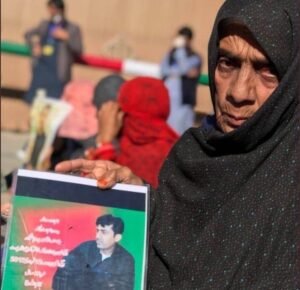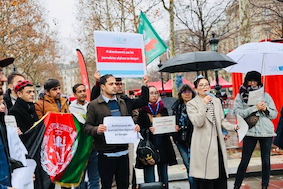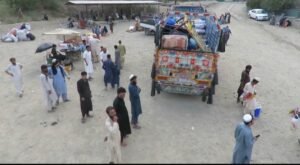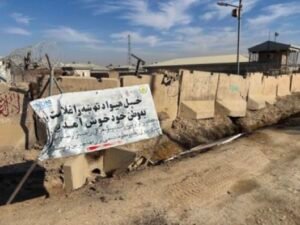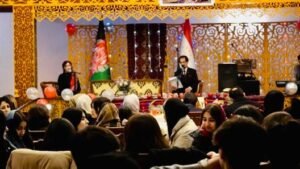Weaponizing Refugees: Pakistan’s Coercive Diplomacy Through Afghan Deportations
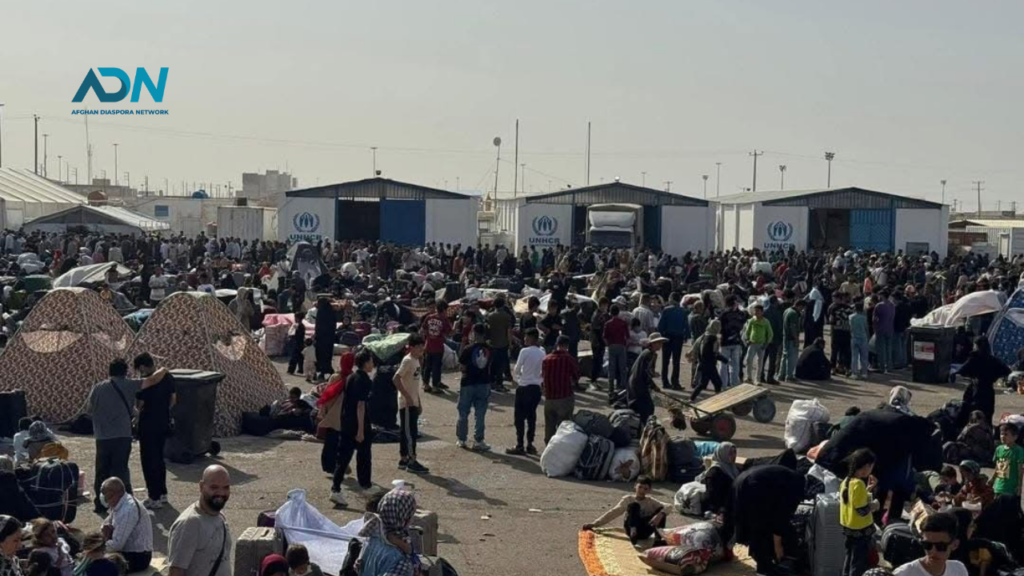
Afghans who were forcibly returned from Iran, pictured on the Afghan side of the border. Photo: @MoRR
By Fatima Chaudhary
When Pakistan launched its Illegal Foreigners Repatriation Plan in late 2023, it claimed the move was about “law and order.” In reality, the deportation campaign has been less about immigration and more about intimidation.
By forcing Afghans back into a fragile homeland, Islamabad is weaponizing human suffering to pressure the Taliban regime in Kabul into compliance on security demands.
According to UN Refugee Agency (UNHCR), Pakistan hosts nearly 3 million Afghans, including 1.3–1.4 million registered refugees with Proof of Registration (PoR) cards and hundreds of thousands with Afghan Citizen Cards (ACC).
In 2024 alone, UNHCR verified at least 643 refoulement cases, including refugees legally registered under PoR. A further 8,954 people were deported, while only 25,634 returned “voluntarily”, a fraction compared to those coerced.
Independent observers suggest the scale is much larger. Amnesty International estimates that over 1,080,000 Afghans were forced back since October 2023, with another 600,000 expected to follow in 2025.
The Norwegian Refugee Council (NRC) confirmed that over one million Afghans had already left by May 2025, many under duress. These numbers eclipse anything Pakistan has attempted before.
The campaign has moved in phases:
• Phase 1 (Nov 2023): undocumented Afghans targeted.
• Phase 2 (Mar 2025): ACC holders included.
• Phase 3 (Jul 2025): even PoR refugees—long recognized by UNHCR—were told to leave as their cards expired.
By July 31, Pakistan’s Ministry of Interior widened the net to PoR holders, despite international appeals. Arrests and harassment of registered refugees began almost immediately.
The security pretext
Islamabad justifies the crackdown as necessary to combat militancy. Yet Pakistan’s own terrorism statistics suggest otherwise. The Pakistan Institute for Peace Studies recorded 521 terrorist attacks in 2024, killing 852 people, most linked to the Tehreek-e-Taliban Pakistan (TTP). But these are not refugee-driven threats. They are homegrown insurgencies rooted in Khyber Pakhtunkhwa and Balochistan. Deporting Afghans, especially families who fled war decades ago, does little to address this.
What it does achieve is political pressure. Kabul is now faced with hundreds of thousands of destitute returnees it cannot absorb, creating a humanitarian time bomb. This is textbook coercive diplomacy: punishing civilians to force the Taliban into action against the TTP.
A historical pattern
This is not the first time Pakistan has manipulated Afghan refugees.
• 1980s: welcomed as assets in the anti-Soviet jihad, with Western and Gulf support.
• 1990s: used as recruitment pools for militias and leverage in shaping Afghanistan’s politics.
• Post-9/11: alternately treated as a burden and as bargaining chips with Washington and NATO.
• Now: a pressure valve to force the Taliban into alignment with Pakistani security priorities.
The common thread: Afghan refugees have always been pawns, never people.
Humanitarian fallout
The fallout is brutal. Families uprooted after decades in Pakistan are dumped at crowded border crossings, often separated in the process. Children born in Karachi or Quetta suddenly find themselves in Kabul or Jalalabad, without schooling, language skills, or safety nets.
UNHCR reports widespread harassment, evictions, arbitrary arrests, denial of basic services—designed to engineer “voluntary” departures.
Human Rights Watch has documented threats and abusive police tactics, forcing Afghans to leave before deportation squads arrive.
Amnesty International calls the policy “a mass violation of the principle of non-refoulement.”
Afghanistan, crippled by sanctions, drought and the Taliban’s regressive governance, cannot absorb this influx. Instead, returnees end up in informal camps, vulnerable to hunger, disease and recruitment by extremist groups. Far from making Pakistan safer, the deportations risk seeding future instability across the border.
Western governments, consumed by Ukraine and Gaza, have done little beyond issuing cautious “concerns.” Humanitarian agencies lack full access inside Pakistan, while the Taliban restricts monitoring on the Afghan side.
Donors are frustrated but hesitant: they fear pressing Pakistan too hard could jeopardize counterterrorism cooperation or trigger new crises. Meanwhile, Afghans continue to be pushed into limbo.
The blowback for Pakistan
Pakistan’s policy may prove self-defeating in three ways:
1. Security: By destabilizing Afghanistan further, Islamabad risks strengthening the very groups it fears, as desperate returnees turn to illicit networks for survival.
2. International credibility: Pakistan portrays itself as a responsible regional actor, but mass expulsions of refugees erode that claim. Even close partners like Germany have been forced to step in, restarting relocation flights for vulnerable Afghans stuck in Pakistan.
3. Domestic cohesion: Crackdowns fuel xenophobia and bleed into harassment of Pakistan’s own Pashtun citizens, deepening ethnic rifts. Meanwhile, industries reliant on Afghan labor face shortages.
What a responsible path would look like
There is another way. If Pakistan genuinely seeks security, three measures are more constructive than collective punishment:
• Reinstate protection for PoR and ACC holders: The June 2025 extension proved Islamabad can manage registration. Instead of expiry deadlines, Pakistan should build a transparent system with UNHCR support.
• Establish screening and asylum procedures: Pakistan has resisted acceding to the 1951 Refugee Convention, but it can still set up domestic mechanisms to uphold non-refoulement and protect the vulnerable.
• Coordinate regional solutions: Rather than exporting instability, Pakistan should engage in trilateral talks with Afghanistan and UN agencies on voluntary, phased, and supported returns—linked to reintegration aid.
Pakistan’s refugee policy is not about sovereignty. It is leverage. It is about sending a message to Kabul: act against the TTP, or we will destabilize you with an unmanageable refugee crisis.
The costs of this strategy are borne not by militants or governments, but by ordinary Afghans, mothers separated from children, workers dragged from jobs, students forced out of classrooms.
History shows that weaponizing refugees is a blunt tool. It damages credibility abroad, breeds instability at home, and rarely achieves the political compliance it seeks.
Conclusion
Pakistan’s deportation drive exposes the cynicism of its diplomacy. For decades, it has hosted Afghan refugees while keeping them in a state of perpetual limbo, to be squeezed or expelled as policy demands. Today, the tactic is laid bare: coercive statecraft at the expense of human lives.
If the international community looks away, the precedent will harden—that refugees can be weaponized without consequence. And if Pakistan continues down this path, it will find that the instability it seeks to export is the instability it imports.
Security cannot be built on broken families. Diplomacy cannot rest on coercion of the powerless. Until Islamabad recognizes this, its policy will remain what it is: a strategy of punishment masquerading as sovereignty.
Fatima Chaudhary is a lecturer at a private university in Punjab province.
Note: The contents of the article are of sole responsibility of the author. Afghan Diaspora Network will not be responsible for any inaccurate or incorrect statement in the articles.

